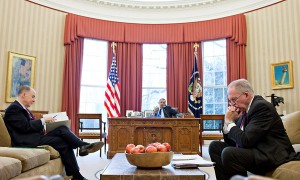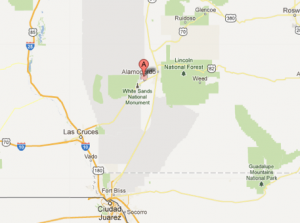Noted Torture Apologist, Branded a Terrorist
For months, I’ve been pointing out that the fear-mongering estimates about the number of Americans who have joined ISIS are inflated due to faulty Terror Watchlist procedures.
That’s in large part because the government considers any unexplained travel to a place known for its terrorist training enough to treat you as a Suspected Terrorist.
[T]he government considers traveling to an area of terrorist activity to be reasonable suspicion that someone is a known or suspected terrorist. The watchlist guidelines list just that as one behavioral indicator for being watchlisted as a known or suspected terrorist (see page 35).
3.9.4 Travel for no known lawful or legitimate purpose to a locus of TERRORIST ACTIVITY.
This means that any Americans who have traveled to Syria or Iraq are likely classified, by default, as terrorists. And many of those may have traveled for entirely different reasons (like freelance journalism).
Given the realities of travel to Syria, this must (and has, among people indicted for attempted material support) extend to people who make one-way travel plans to Turkey, from whence recruits often walk across the border.
Yesterday, Spencer Ackerman got a Senior Official to make the same point I’ve been making — the 100 alleged fighters include a lot of people who are not fighters but instead got swept up because the terror watchlisting process is way too dysfunctional.
The US government believes there are 20 to 30 Americans currently fighting in Syria for the panoply of jihadist groups there, according to a senior official.
The estimate is less than an earlier and much-quoted assessment of approximately 100 Americans taking part in Syria’s civil war and the spillover violence in neighboring Iraq, where the Islamic State militant group (Isis) has launched a war of conquest.
A senior administration official, speaking to the Guardian on condition of anonymity, said that the estimate of roughly 100 represented all Americans who have travelled to Syria or attempted to travel to Syria over the past 18 months, a qualification that US government spokespeople have typically not provided.
Not all of the 20 to 30 Americans went to Syria to join Isis. Some fight with rebel groups resisting the regime of dictator Bashar al-Assad or rival jihadist groups.
[snip]
Nor have all the 100-odd Americans who have travelled or attempted to travel to Syria in the past year and a half gone to fight. The estimate also includes humanitarian aid workers and others attempting to alleviate the Middle East’s most brutal conflict, the official said.
Told ya.
If you want to see how ridiculous this is in practice (or, perhaps, how ironically appropriate) consider the plight of Stephen Hayes, Dick Cheney’s mouthpiece and all-around torture apologist. He recently got put on the Selectee list because — he believes — he made a one way trip to Istanbul for what was actually a cruise but if you do lots of mindless dragnettery might appear like a trip to join Jabhat al-Nusra. (I wouldn’t be surprised if he’s two degrees from some suspect, given how broadly those things get defined and how many international acquaintances he has.)
Hayes, who spoke to POLITICO by phone on Tuesday, suspects that the decision stems from U.S. concerns over Syria. Hayes and his wife recently booked a one-way trip to Istanbul for a cruise, and returned to the States, a few weeks later, via Athens.
It turns out Hayes is finding out the same thing I learned when my white northern European over-educated spouse went through the immigration process. Even for people who have resources and perfect English, making the bureaucracy work the way it is supposed to can be daunting.
At the time of our conversation, Hayes was on the DHS website trying to fill out forms to get his name cleared. It wasn’t going well.
“Not surprisingly, it’s confusing,” Hayes said. “The first time I did it, the whole site froze. Now it’s asking me for my passport number and a bunch of other information. Then I think I’m supposed to submit an actual copy of my passport, which I obviously can’t do electronically.”
Yes, I admit some glee that some like Hayes got swept up in the mindless dragnettery his boss championed. But even Hayes — whose life will soon be back to normal, I imagine — does not deserve this pointless harassment.
Consider how much worse this accidental terror-tourism is for Muslims who can’t run to the press which will mock their plight?
Stephen Hayes may be, by many measures, a horrible human being, arguably even a material supporter of war crimes. But his cruise out of Turkey does not make him a terrorist, no matter what the National Counterterrorism Center claims.


